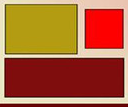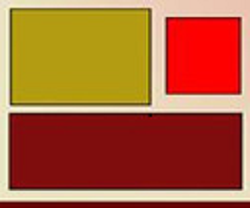 B.R.A.I.N. is an academic journal willing to create links between specialists from clearly diverse exploratory fields, for example, Computer Science and Neurology. In fact, there is a considerable measure of subjects, for example, Artificial Intelligence, Cognitive Sciences and Neurosciences, that can converge in the investigation of the brain and its keen capacities.
B.R.A.I.N. is an academic journal willing to create links between specialists from clearly diverse exploratory fields, for example, Computer Science and Neurology. In fact, there is a considerable measure of subjects, for example, Artificial Intelligence, Cognitive Sciences and Neurosciences, that can converge in the investigation of the brain and its keen capacities.
Mr. Kieran Greer contributes to our latest journal volume with a revolutionary research, New Ideas for Brain Modelling. His work describes some biologically-inspired processes that could be used to build the sort of networks that we associate with the human brain.
The surprise element to his research is a ‘refined’ neuron. This is a group of neurons that by joining together can produce a more analogue system, but with the same level of control and reliability that a binary neuron would have. With this new structure, it will be possible to think of an essentially binary system in terms of a more variable set of values. The paper also shows how recent research can be combined with established theories to produce a more complete picture.
The propositions are largely in line with conventional thinking, but possibly with one or two more radical suggestions. An earlier cognitive model can be filled in with more specific details, based on the new research results, where the components appear to fit together almost seamlessly. The intention of the research has been to describe plausible ‘mechanical’ processes that can produce the appropriate brain structures and mechanisms, but that could be used without the magical ‘intelligence’ part that is still not fully understood. There are also some important updates from an earlier version of this paper.
Looking at a cross-section, or magnified image of a real brain, we can see how completely random the structure is. A computer model would struggle to create this sort of structure and prefers a much more ordered one.
While the new model is mostly concerned with the search and retrieval process, the first part of this paper showed an arbitrary construction process as well – how the channels that get searched over might form in the first place. The resulting simplified neuronal operation would give added confidence that the same type of neuron can be modelled reliably, including threshold and output signal strength.
It can give a desirable variety of signal strengths through a layered hierarchical structure that can be created as part of any random process. Although, its usefulness needs to be tested further. As far as the brain is concerned, when the appropriate stimulus is encountered, all of the neurons that are related to it can fire together, representing the same concept in some way. This would be regarded as what they are supposed to do and it is self-organising. It could lead to better models of how neurons interact, if more sophisticated sets of values can be considered. Maybe some sensors or input/output connectors with the real world could be connected with the computer simulator to test the theory.
For more information on the research, click here!
Diana-Elena Melinte
